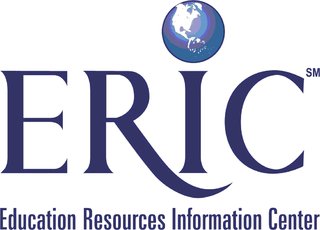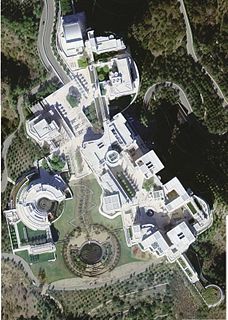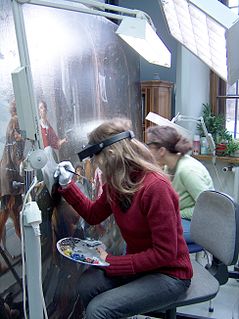History
Editorial work has been managed by the Getty since 1983. In 1987 the Getty created a department dedicated to compiling and distributing terminology called the Vocabulary Coordination Group, now known as the Getty Vocabulary Program, which was within the Getty Information Institute. [5] The data is compiled and edited in an editorial system that was custom-built by Getty technical staff to meet the unique requirements of compiling data from many contributors, building complex and changing polyhierarchies, merging, moving, and publishing in various formats. Final editorial control of the Vocabularies are maintained by the Getty Vocabulary Program, using well-established editorial rules. They are now published in automated formats only, in both a searchable online Web interface and in data files available for licensing. [6]
Since 1998, Getty Information Technology Services and Web Services have worked closely with the Getty Vocabulary Program to conceive, develop, deploy, and continuously enhance the technologies necessary to support the growth and usage of the vocabulary databases. Three major projects comprise the work completed to date. First, the Vocabulary Coordination System (VCS) project created a single production system that replaced three separate, outdated and disparate data collection and editorial systems that had been used to produce the three vocabularies. The new, more powerful production engine allows Getty staff to efficiently collect, analyze, edit, merge and distribute terminology from Getty departments, as well as from external collaborating institutions. Second, the Vocabularies on the Web project produced unified Web-based access to the three Getty vocabularies and made them available to hundreds of thousands of researchers, scholars, and members of the general public who are interested in the subject areas covered by the vocabularies. This project also enhanced security to protect the Getty's intellectual property, and added measurement metrics to allow the Getty to gauge the usage volume, usage patterns, and the success of these efforts. Finally, the Vocabulary Contributions project created processes and procedures for making use of and contributing to the vocabulary databases an integral part of the work in all relevant Getty and external projects. [7]
In 2000, the Getty Vocabulary Program was moved from its Santa Monica office to its current location within the Getty Research Institute at the Getty Center. [8]

The Education Resources Information Center (ERIC) is an online digital library of education research and information. ERIC is sponsored by the Institute of Education Sciences of the United States Department of Education.
Artstor is a non-profit organization that builds and distributes the Digital Library, an online resource of more than 2 million images in the arts, architecture, humanities, and sciences, and Shared Shelf, a Web-based cataloging and image management software service that allows institutions to catalog, edit, store, and share local collections.
The Getty Thesaurus of Geographic Names is a product of the J. Paul Getty Trust included in the Getty Vocabulary Program. The TGN includes names and associated information about places. Places in TGN include administrative political entities and physical features. Current and historical places are included. Other information related to history, population, culture, art and architecture is included.
Simple Knowledge Organization System (SKOS) is a W3C recommendation designed for representation of thesauri, classification schemes, taxonomies, subject-heading systems, or any other type of structured controlled vocabulary. SKOS is part of the Semantic Web family of standards built upon RDF and RDFS, and its main objective is to enable easy publication and use of such vocabularies as linked data.
Intute was a free Web service aimed at students, teachers, and researchers in UK further education and higher education. Intute provided access to online resources, via a large database of resources. Each resource was reviewed by an academic specialist in the subject, who wrote a short review of between 100 and 200 words, and described via various metadata fields what type of resource it was, who created it, who its intended audience was, what time-period or geographical area the resource covered, and so on. As of July 2010, Intute provided 123,519 records. Funding was stopped in 2011, and the site closed.

The Getty Research Institute (GRI), located at the Getty Center in Los Angeles, California, is "dedicated to furthering knowledge and advancing understanding of the visual arts".
The Art & Architecture Thesaurus (AAT) is a controlled vocabulary used for describing items of art, architecture, and material culture. The AAT contains generic terms, such as "cathedral," but no proper names, such as "Cathedral of Notre Dame." The AAT is used by, among others, museums, art libraries, archives, catalogers, and researchers in art and art history. The AAT is a thesaurus in compliance with ISO and NISO standards including ISO 2788, ISO 25964 and ANSI/NISO Z39.19.

A conservator-restorer is a professional responsible for the preservation of artistic and cultural artifacts, also known as cultural heritage. Conservators possess the expertise to preserve cultural heritage in a way that retains the integrity of the object, building or site, including its historical significance, context and aesthetic or visual aspects. This kind of preservation is done by analyzing and assessing the condition of cultural property, understanding processes and evidence of deterioration, planning collections care or site management strategies that prevent damage, carrying out conservation treatments, and conducting research. A conservator's job is to ensure that the objects in a museum's collection are kept in the best possible condition, as well as to serve the museum's mission to bring art before the public.

Metadata is "data that provides information about other data". In other words, it is "data about data." Many distinct types of metadata exist, including descriptive metadata, structural metadata, administrative metadata, reference metadata and statistical metadata.
Categories for the Description of Works of Art (CDWA) describes the content of art databases by articulating a conceptual framework for describing and accessing information about works of art, architecture, other material culture, groups and collections of works, and related images. The CDWA includes 532 categories and subcategories. A small subset of categories are considered core in that they represent the minimum information necessary to identify and describe a work. The CDWA includes discussions, basic guidelines for cataloging, and examples.

The Netherlands Institute for Art History or RKD is located in The Hague and is home to the largest art history center in the world. The center specializes in documentation, archives, and books on Western art from the late Middle Ages until modern times. All of this is open to the public, and much of it has been digitized and is available on their website. The main goal of the bureau is to collect, categorize, and make art research available, most notably in the field of Dutch Masters.
ISO 25964 is the international standard for thesauri, published in two parts as follows:
ISO 25964 Information and documentation - Thesauri and interoperability with other vocabulariesPart 1: Thesauri for information retrieval [published August 2011] Part 2: Interoperability with other vocabularies [published March 2013]
The Cultural Objects Name Authority (CONA) is a project by the Getty Research Institute to create a controlled vocabulary containing authority records for cultural works, including architecture and movable works such as paintings, sculpture, prints, drawings, manuscripts, photographs, textiles, ceramics, furniture, other visual media such as frescoes and architectural sculpture, performance art, archaeological artifacts, and various functional objects that are from the realm of material culture and of the type collected by museums. The focus of CONA is works cataloged in scholarly literature, museum collections, visual resources collections, archives, libraries, and indexing projects with a primary emphasis on art, architecture, or archaeology. The target users are the visual resources, academic, and museum communities.
In the context of information retrieval, a thesaurus is a form of controlled vocabulary that seeks to dictate semantic manifestations of metadata in the indexing of content objects. A thesaurus serves to minimise semantic ambiguity by ensuring uniformity and consistency in the storage and retrieval of the manifestations of content objects. ANSI/NISO Z39.19-2005 defines a content object as "any item that is to be described for inclusion in an information retrieval system, website, or other source of information". The thesaurus aids the assignment of preferred terms to convey semantic metadata associated with the content object.

The documentation of cultural property is a critical aspect of collections care. As stewards of cultural property, museums collect and preserve not only objects but the research and documentation connected to those objects, in order to more effectively care for them. Documenting cultural heritage is a collaborative effort. Essentially, registrars, collection managers, conservators, and curators all contribute to the task of recording and preserving information regarding collections. There are two main types of documentation museums are responsible for: records generated in the registration process—accessions, loans, inventories, etc. and information regarding research on objects and their historical significance. Properly maintaining both types of documentation is vital to preserving cultural heritage.
Lightweight Information Describing Objects (LIDO) is an XML schema for describing museum or collection objects. Memory institutions use LIDO for “exposing, sharing and connecting data on the web”. It can be applied to all kind of disciplines in cultural heritage, e.g. art, natural history, technology, etc. LIDO is a specific application of CIDOC CRM.
A Collections Management System (CMS), sometimes called a Collections Information System, is software used by the collections staff of a collecting institution or by individual private collectors and collecting hobbyists or enthusiasts. Collecting institutions are primarily museums and archives and cover a very broad range from huge, international institutions, to very small or niche-specialty institutions such as local historical museums and preservation societies. Secondarily, libraries and galleries are also collecting institutions. Collections Management Systems (CMSs) allow individuals or collecting institutions to organize, control, and manage their collections' objects by “tracking all information related to and about” those objects. In larger institutions, the CMS may be used by collections staff such as registrars, collections managers, and curators to record information such as object locations, provenance, curatorial information, conservation reports, professional appraisals, and exhibition histories. All of this recorded information is then also accessed and used by other institutional departments such as “education, membership, accounting, and administration."
The Modern and Contemporary Art Research Initiative is a program started by the Getty Conservation Institute (GCI). It began in 2007 in response to the variety of new materials and technologies being used by contemporary artists in their work, and the lack of known conservation treatments for these new materials. This area was seen as a gap in the field of conservation, but also posed unique challenges when considering the intention of the artist and the physical aging that his or her materials might endure. According to Thomas F. Reese, "Conservators...must enter into the critical spirit of the works themselves if they are to save and transmit not merely decontextualized fragments but their essence to the future."
The Répertoire de vedettes-matière de l'Université Laval (RVM) is a controlled vocabulary made up of four mostly bilingual thesauruses. It is designed for document indexers, organizations that want to describe the content of their documents or of their products and services, as well as anyone who wants to clarify vocabulary in English and French as part of their work or research.






